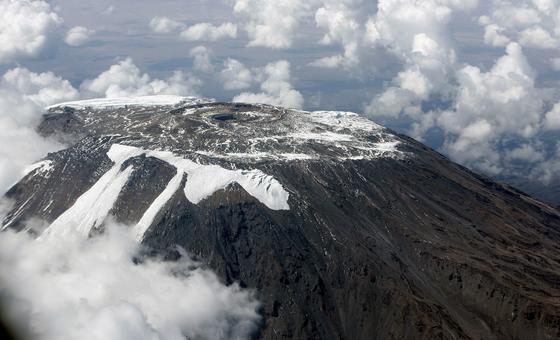Some of the world’s most iconic glaciers are set to disappear by 2050, according to a new study by UNESCO, which highlights the accelerated melting of glaciers in World Heritage sites.
Glaciers in a third of sites are under threat, regardless of efforts to limit temperature increases.
However, the study outlines that it is still possible to save the other two-thirds, if the rise in global temperatures does not exceed 1.5°C compared to the pre-industrial era. UNESCO says that this will be a major challenge facing delegates at the upcoming COP27.
Fifty UNESCO World Heritage sites are home to glaciers, representing almost 10% of the Earth’s total glacierized area. They include the highest (next to Mt. Everest), the longest (in Alaska), and the last remaining glaciers in Africa.
CO2 culprit
The UNESCO study, in partnership with the International Union for Conservation of Nature (IUCN), shows that these glaciers have been retreating at an accelerated rate since 2000 due to CO2 emissions, which are warming temperatures.
They are currently losing 58 billion tons of ice every year – equivalent to the combined annual water use of France and Spain – and are responsible for nearly five per cent of observed global sea-level rise. The glaciers under threat are in Africa, Asia, Europe, Latin America, North America and Oceania.
Call to action
“This report is a call to action. Only a rapid reduction in our CO2 emissions levels can save glaciers and the exceptional biodiversity that depends on them. COP27 will have a crucial role to help find solutions to this issue. UNESCO is determined to support states in pursuing this goal,” said Audrey Azoulay, UNESCO’s Director-General.
In addition to drastically reduced carbon emissions, UNESCO is advocating for the creation of a new international fund for glacier monitoring and preservation. Such a fund would support comprehensive research, promote exchange networks between all stakeholders and implement early warning and disaster risk reduction measures.
Uncertain future
Half of humanity depends directly or indirectly on glaciers as their water source for domestic use, agriculture, and power. Glaciers are also pillars of biodiversity, feeding many ecosystems.
“When glaciers melt rapidly, millions of people face water scarcity and the increased risk of natural disasters such as flooding, and millions more may be displaced by the resulting rise in sea levels”, said IUCN Director General Dr Bruno Oberle.
“This study highlights the urgent need to cut greenhouse gas emissions and invest in Nature-based Solutions, which can help mitigate climate change and allow people to better adapt to its impacts”.

The Jökulsárlón Glacier Lagoon in Iceland, part of a World Heritage Site, is formed naturally from melted glacial water and is perpetually growing while big blocks of ice crumble from a shrinking glacier.

